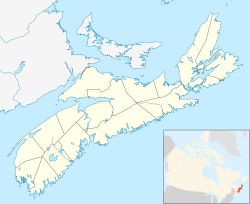Annapolis Valley First Nation Reserve facts for kids
Quick facts for kids
Annapolis Valley First Nation Reserve
|
|
|---|---|
| Country | Canada |
| Province | Nova Scotia |
The Annapolis Valley First Nation Reserve is a special area of land in Nova Scotia, Canada. It is located in Kings County. This reserve is home to members of the Miꞌkmaq people, who are one of Canada's Indigenous groups.
This reserve used to be known as Cambridge 32. Today, it is managed as part of the larger Annapolis Valley First Nation.
Contents
Annapolis Valley First Nation Reserve
The Annapolis Valley First Nation Reserve is a place where the Mi'kmaq people live and keep their culture alive. It is one of many reserves across Canada that are set aside for Indigenous communities.
What is a First Nation Reserve?
A First Nation reserve is a piece of land that the Canadian government has set aside for the use and benefit of a specific First Nation. These lands are important for Indigenous peoples to maintain their traditions, languages, and ways of life. They are also places where communities can build homes, schools, and other important facilities.
Who are the Mi'kmaq People?
The Mi'kmaq are one of the largest and oldest Indigenous groups in what is now Eastern Canada. They have lived in this region for thousands of years. Their traditional territory, called Mi'kma'ki, includes all of Nova Scotia, Prince Edward Island, and parts of New Brunswick, Quebec, and Newfoundland. The Mi'kmaq people have a rich history, unique language, and strong cultural traditions.
Where is Annapolis Valley First Nation Reserve Located?
The Annapolis Valley First Nation Reserve is found in Kings County, Nova Scotia. Kings County is in the western part of Nova Scotia, a province on Canada's Atlantic coast. The reserve is situated in a beautiful area known for its farming and natural landscapes.
How is the Reserve Managed?
The Annapolis Valley First Nation Reserve is managed by the Annapolis Valley First Nation. This First Nation is a self-governing community. They make decisions about their land, resources, and community services. This includes things like education, health, and housing for their members.



